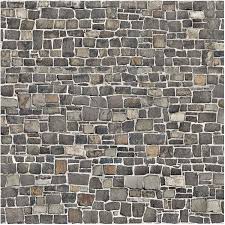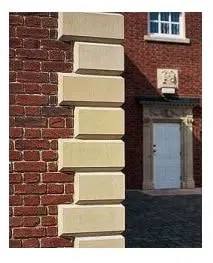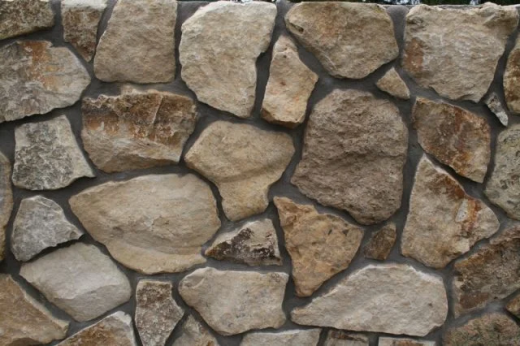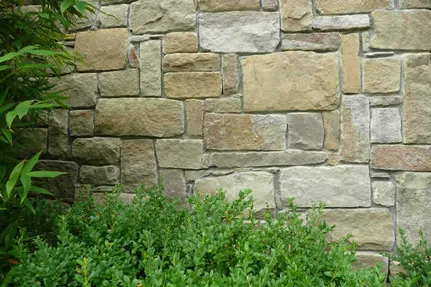What is Stone Masonry?
Stone masonry is the construction of stones cemented together with mortar. Where stones are plentiful, cutting and dressing them to the right shape makes it cost-effective to construct numerous building components such as walls, columns, tooting, arches, beams, etc. Piers, docks, dams, lighthouses, and other sea construction built with stone masonry, stronger, more robust, and more weather-resistant than brick masonry.
Materials Used for Stone Masonry:
The materials used for stone masonry are:
1. Stones:
The stones used in masonry must be robust, durable, and free of cracks, sand holes, and voids. The availability of the stone and the construction’s relevance decide the stone’s selection for a given project. Limestone, sandstone, granite, marble, laterite, and other stones are utilized in masonry construction.
2. Mortar:
Mortar is the binding medium used in masonry construction. Masonry mortar consists of cement or lime, sand, and water. In nature, the resulting mixture is uniform. The following are the most important aspects to consider while choosing masonry mortar:
i) Strength is needed.
ii) The stone’s color
iii) The loads placed on the structure
Uses of Stone Masonry:
i) The base of the building, walls, piers, and pillars, as well as the architectural work.
ii) Roofing materials and roof coverings
iii) The process of cladding is carried out.
iv) Dams, lighthouses, and other colossal constructions are examples of this.
v) Careers in paving
vi) Ballast, blackboards, and an electrical switch building are part of the railway system.
vii) Lintels, beams, beams, arches, domes, and other architectural elements
Classification of Stone Masonry:
Stone Masonry has two categories:
1. Ashlar Masonry
2. Rubble Masonry
1. Ashlar Masonry:
Ashlar masonry comprises precisely finished stones with consistent and fine seams. The joints are approximately 3mm thick and placed in diverse ways. The size of the stone blocks must be proportional to the wall thickness. The following are the several types of ashlar masonry:

Fig 1: Ashlar Masonry
Courtesy: 123rf.com
The following are the several types of ashlar masonry:
- Ashlar Fine Masonry
- Ashlar Rough Tooled Masonry
- Ashlar Block in Course
- Rock or Quarry Faced Masonry
- Ashlar Chamfered Masonry
Ashlar Fine Masonry: Each stone in an ashlar fine masonry structure is cut to regular size, almost rectangular shape. As a result of this geometry, the nearby stones have ideal horizontal and vertical joints. The expense of constructing an ashlar fine masonry structure is very high.
Ashlar Rough Masonry: The sides of the stones are carved carefully. Tools used to roughen the stones’ surfaces. A 25mm wide strip keeps each stone’s rough-dressed face around the perimeter.
Ashlar Block in Course: This brickwork combines ashlar and rubble masonry. The masonry stones’ faces are either rough tooled or hammer-prepared stones. The wall’s backing can make of rubble masonry.
Rock or Quarry Faced Masonry: A 25 mm broad strip formed with a chisel stand around the perimeter of each stone in this brickwork type. The remainder of the face keeps in the same state as when received.
Ashlar Chamfered Masonry:A strip joints to this type of masonry. However, the sides are chamfered or beveled at a 45-degree angle using a chisel depth of 25mm.

Fig 2: Ashlar Chamfered Masonry
Courtesy: buildipedia.com
2. Rubble Masonry:
It s a style of stone masonry in which the stones are either naked or coarsely dressed. The thickness of these masonry structures is not regular. The rubble masonry’s strength is determined by:
i) Use of long through stones
ii) high-quality mortar, and
iii) The proper filling of mortar between the stone and joints.
Rubble masonry has two types:
a. Rubble Masonry with Courses
b. Uncoursed Rubble Masonry
c. Masonry with Dry Rubble
d. Polygonal Masonry
e. Masonry in Flint

Fig 3: Rubble Masonry
Courtesy: wellssons.com
a. Rubble Masonry with Courses: The stones in a given course of coursed rubble masonry are all the same height. As a result, the stones utilized vary in size. All of the courses of this kind are not the same height. This kind of masonry is used to construct public buildings, abutments, residential structures, and bridge piers.
b. Uncoursed Rubble Masonry: The most affordable and roughest type of stone masonry is uncoursed rubble masonry. These structures are made of stones of various shapes and sizes. The stones are known as naked stone blocks since they are taken straight from the quarry. In this construction technique, the courses are not maintained regularly. The first stones to be put are the largest ones. Spalls or sneaks are used to fill the gaps between them. There are two kinds of uncoursed rubble masonry:- i)Random Uncoursed Rubble Masonry and ii) Square Uncoursed Rubble Masonry.
i) Random Uncoursed Rubble Masonry: TIn this style, a mason’s hammer is used to remove the stone’s weak corners and edges. Larger stones are used at the quoins and jambs to increase the strength of the masonry
ii) Square Uncoursed Rubble Masonry. The stones are shaped into a rough square shape and utilized in construction here. A hammer-dressed polish is applied to the facing stones. As quoins, larger stones are utilized. Chips aren’t used as a form of bedding.

Fig 4: Square Uncoursed Rubble Masonry
Courtesy: constructionor.com
c) Masonry with Dry Rubble: This rubble masonry was built without mortar. Smaller stone chunks are used to fill narrow gaps. It’s used in the construction of earthen dams and canal slopes.
d) Polygonal Masonry: Masonry stones are roughly formed into irregular polygons. The stones positioned to avoid vertical joints in the face work.
e) Masonry in Flint: Masonry stones are roughly formed into irregular polygons here. The stones positioned to avoid vertical joints in the face work as many joints as possible should be broken.
Conclusion
Choosing one of these stone masonry techniques to construct a structure is a significant time and financial investment, but you can’t deny its timeless beauty and long-term sturdiness. Stone Masonry is a type of masonry that uses stones and mortar to build structures. The foundations, floors, retaining walls, arches, and columns are all built using this method.
References:
1.Singh, S. (2020, September 18). 12 Different Types Of Stone Masonry Used In Construction. civil engineering web. https://www.civilengineeringweb.com/2020/09/types-of-stone-masonry.html.
2. The Advantages Of Natural Stone Masonry for Your Home – Blog – SDS Stone Paving. (n.d.). The Advantages of Natural Stone Masonry for Your Home – Blog – SDS Stone Paving. 3.
3. All That You Need To Know About the Types Of Stone Masonry | Alexander And Xavier Masonry. (2021, October 18). Best Masonry Contractor in Garland TX | Alexander and Xavier Masonry. https://axmasonry.com/types-of-stone-masonry/.
4. The Different Types Of Stone Masonry. (2018, December 21). The Different Types of Stone Masonry. https://langenfeldmasonry.com/2018/12/the-different-types-of-stone-masonry/.
5. How To Do Stonemasonry (with Pictures) – WikiHow. (2021, October 13). wikiHow. https://www.wikihow.com/Do-Stonemasonry.
If you have a query, you can ask a question here.


